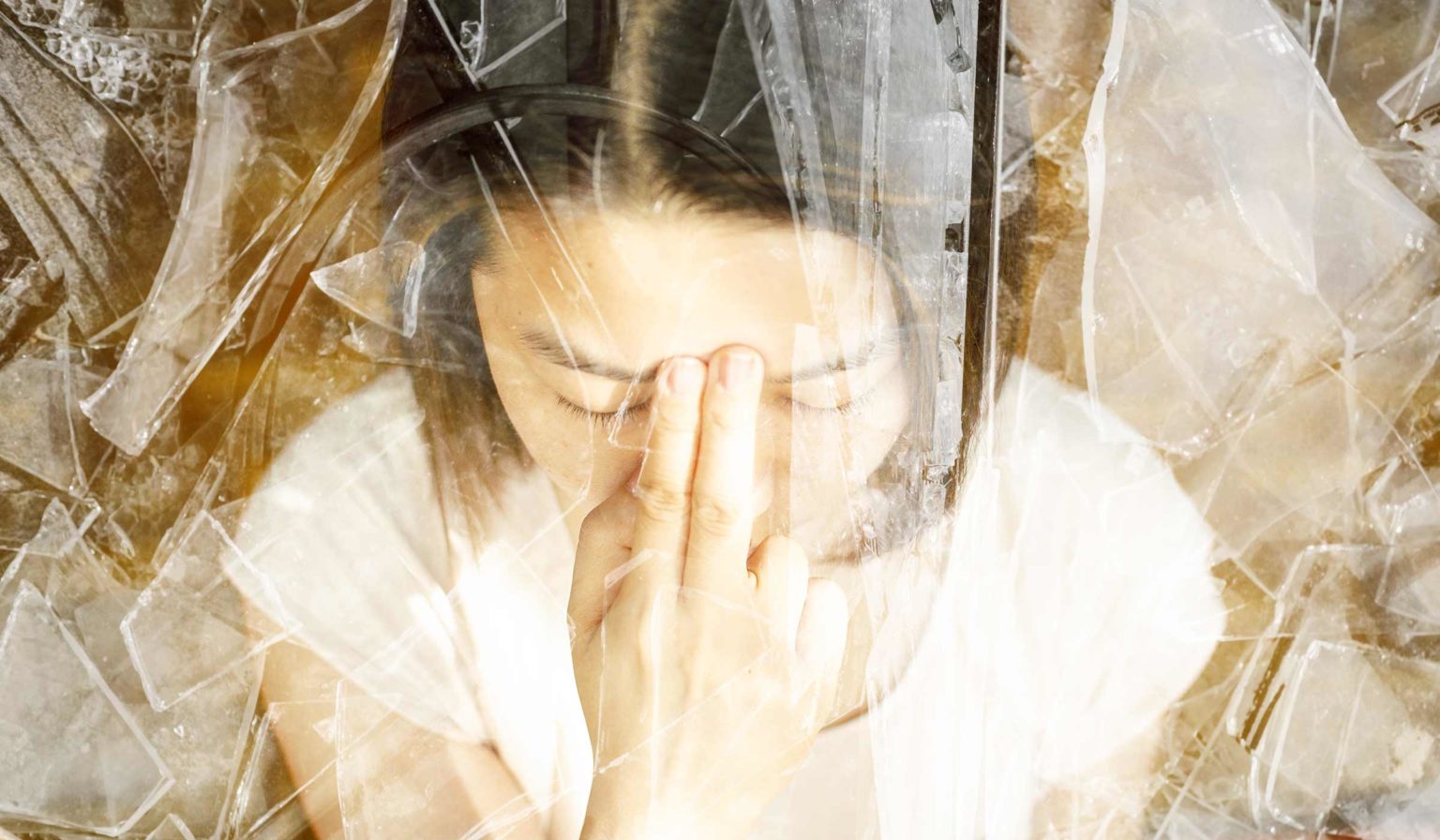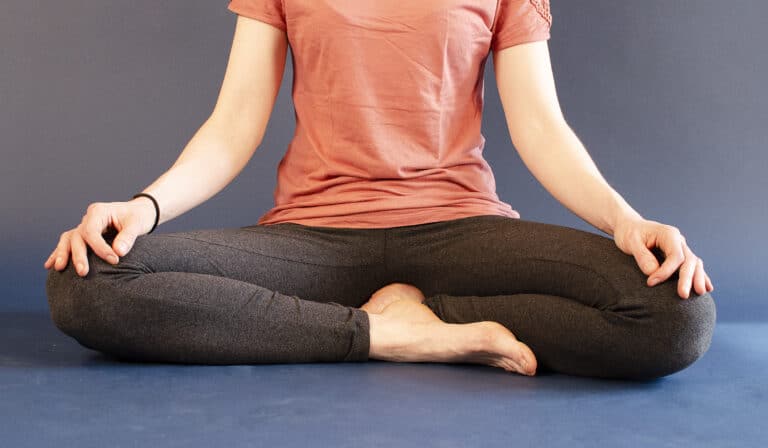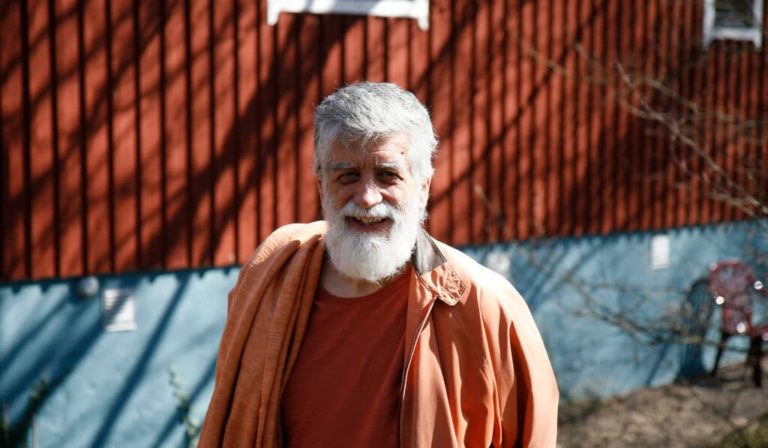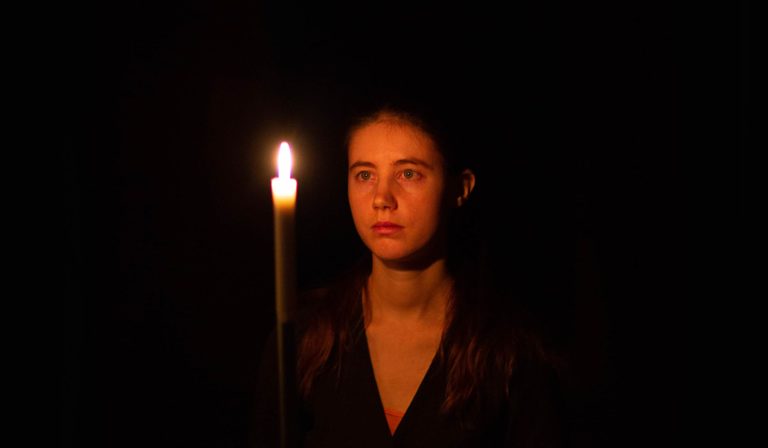Pranayama is supposed to take yoga to the next level. Yet, some yoga practitioners are afraid of it. Even teachers are cautious due to perceived risks of adverse effects. What more is, you can find horror stories of practices gone wrong on the internet that will make you wonder if breathing exercises are safe at all. The question is how much of the mistrust comes from fear, and how much is legitimate?
I have practised pranayama extensively for twenty years and taught it to thousands. I will explain all you need to know about real and imagined risks and how to practice in a perfectly safe way.
Catastrophic results of pranayama
No doubt working with your breath can bring about profound changes in your psychological state. It can alter your perception and thought processes and amplify sensations as well as feelings. Therefore when doubts creep up during pranayama, it is usually felt quite tangibly.
With breathing exercises, it is natural for doubt to arise. After all, the breath is a vital life-supporting function. Therefore, restricting it with yogic practices can give rise to fear, anxiety and even panic attacks if you don’t progress intelligently. This is of course understandable.
But in some instances, people testify about breath manipulation that has lead to absolute havoc. Some swear that pranayama has made them go crazy. Others claim to have prematurely awakened the kundalini energy and gotten into a dysfunctional state with their subconscious wide open.
There is a passage in the hatha yoga Pradipika that seemingly confirms the worries of those who are reluctant about pranayama.
Just as lions, tigers, and elephants are gradually controlled, so prana is controlled through practice. Otherwise, the practitioner is destroyed.
—Hatha Yoga Pradipika 2:15
There certainly appears to be enough to worry about. But are the worries justified? Is pranayama dangerous?
Putting the horror stories into perspective
Having taught pranayama for twenty years to thousands of yoga practitioners, I have seen overwhelmingly positive results. I have never seen any serious adverse effects of pranayama among yogis who follow the method to which I adhere.
I have not seen issues with the students who practice with me weekly in city classes. There have been no dramatic episodes during the yoga retreats I guide either, despite students having three pranayama sessions a day. The centre where I got my training organises a yearly three-month retreat with pranayama building up to five times per day. Even during such intense practice, I saw no issues with participants suffering from uncontrollable psychic outbursts.
I have many colleagues teaching pranayama extensively. Never have I heard of any one of them having to deal with students suffering severe adverse effects. Based on my experience and from the experience of my network, pranayama taught correctly is safe.
Scientific studies of adverse effects of pranayama
If pranayama does produce negative results, it is not something that has been picked up by scientists either. Researching for this post, I looked in scientific catalogues for “adverse effects of pranayama”, “side effects of pranayama”, “complications of pranayama” and similar. I found no scientific articles containing these keywords to any significant extent.
Freedivers and breath retention
According to those who dismiss pranayama as dangerous, breath retention is the riskiest part. But it is not only in yoga that people hold their breath. Freedivers do it too, and they do it extensively. Proficient divers usually hold their breath much longer than the average pranayama practitioner.
To my knowledge, there is no fear of psychological disorders from breath retention in the freediving community. On the contrary, free divers testify that diving helps them clear their minds much as meditation does.
Elite free divers hold their breath for minutes when diving. Many freedivers are also adepts of pranayama.

Are there no real dangers with pranayama?
What I have written so far suggests that there are no dangers with breathing exercises. As long as you do them right, I do think that is the case. However, this does not mean that they can’t give dramatic effects that can be overwhelming if you don’t have training. Intense and unfamiliar experiences can be frightening. But very often, it is the fear that is the problem rather than the experience in itself.
How come some teachers are sceptical about pranayama?
The reason many yoga teachers fear pranayama is because most modern yoga styles are all about poses. Few current teachers are proficient in pranayama. They don’t know pranayama from their own experience, and what you don’t know, you fear. Furthermore, most modern traditions have little experience teaching pranayama and don’t possess the necessary educational approach.
How to avoid adverse effects of pranayama
While pranayama is safe if you do it right, you can undoubtedly get undesirable effects if you get it wrong. So in the following section, I will describe possible mistakes and how to avoid them.
Don’t overdo it
The right dose differentiates a poison from a remedy. This goes for breathing exercises as well. So don’t think that the more you do, the better it is. Respect the recommendations of your teacher or the method you are following.
As an anecdote, I heard about a teacher who instructed his students to perform certain pranayamas for five to ten minutes. One of the students went home and did the exercise for an hour. According to the teacher, the person got so ill from it she needed to see a doctor.
Progress slowly and practice regularly
Regular practice is crucial for good results with yogic breathing. And progressing gradually over months and years is vital. Irregular practise makes pranayama uncomfortable and superficial with doubtful results.
For the reasons mentioned above, I am sceptical about pranayama workshops. For a yoga centre that teaches primarily postural yoga, it is tempting to organise pranayama immersions occasionally. But a sudden immersion is not a suitable way to do pranayama. One of the cases of pranayama gone wrong I found when researching for this article had happened during a workshop.
Do prolonged fast breathing under expert guidance only
In my tradition, we do not emphasise rapid breathing. But I know some schools do, so I want to give it special attention.
Rapid, deep breaths can dramatically alter your state of consciousness if continued for some time. Stanislav Grof is a famous psychologist and researcher specialising in the psychoactive drug LSD. He found that prolonged fast breathing, he calls it holotropic breathing, could bring about effects similar to LSD.
I have tried holotropic breathing as well as a similar Sufi practice and find it fascinating and potent. However, the mechanisms these practices activate are not those we work with within yoga.
Prolonged hyperventilation can have scary effects if used without guidance. I once witnessed how a crying young woman unintentionally breathed herself into an altered state. By sobbing rhythmically and deeply, she lost muscle control, got spasms and tinglings in the fingers. I called the emergency number for medical advice. They sent an ambulance since they thought the symptoms could be due to a neck injury.
On arrival, the experienced staff in the ambulance immediately understood what was going on. All they had to do was to ask the woman to breathe naturally. At that point, she had been sobbing deeply for almost an hour. Nevertheless, the symptoms disappeared within a minute.
This situation ended well but was embarrassing for the woman in question. Now picture if this had occurred within the context of an ill-guided yoga practice. I can easily see how it could have spiralled into fear of a premature kundalini rising.
Ill performed bhastrika and hyperventilation
When you do regular yogic breathing exercises in a yoga class, hyperventilation should not be an issue. However, if you don’t do the exercises correctly, it could happen during bhastrika pranayama, for example.
For bhastrika, you should breathe forcefully and rapidly many times and then hold your breath for a good amount of time. Rapid breathing makes it easier to retain the breath. I recommend beginners to start with 20 breaths with an ideal rhythm of 100-120 breaths per minute, though that can be challenging for a newbie. I recommend advanced practitioners do up to one hundred breaths.
Should you do too many repetitions, or should your rhythm be too slow, you could hyperventilate. If you breathe at a rhythm of fewer than 60 breaths per minute, you will be at risk. At twenty breaths, little or no effect will be noticeable. But should you go on for much longer, you could be in for an uncomfortable surprise.
Calm down before and give yourself time afterwards
Give yourself time to get into the right state for pranayama. The best way to do this is by practising yoga poses. Unless you are in a relaxed state during pranayama, it will be superficial and uncomfortable. Plus, the effects will be harder to integrate. Half an hour to an hour of asana practice is a perfect warm-up. That is how I guide my sessions here on Forceful Tranquility.
For safe practice, you will also need time after pranayama to let the effects settle in. Stay sitting motionless and quiet with closed eyes for at least five to ten minutes afterwards. Even better, continue with meditation. Until the effects of the practice have settled, you may be in a slightly altered state. Take note; that also means that you will have to wait before driving.
Suppose you regularly skip quiet time after pranayama and rush into activity afterwards. In that case, adverse effects may arise such as nervousness and agitation.
Balance intense pranayama with activity
Intense pranayama practice will sharpen your perception, make you feel emotions more distinctly and soften the boundaries between the conscious and the subconscious. It will also give you extra mental energy that will intensify your thought patterns. If you can accept the content of your mind, this is all good. However, should you struggle with your thoughts, it could be uncomfortable for you.
Luckily, there is a way to harmonise surplus energy easily. What you need is activity. Ordinary activities are just perfect. Going to work, taking care of your garden or running a household are all examples of activities that will harmonise your energy. We call it karma yoga when we turn everyday actions into spiritual practice by performing them intentionally and unselfishly. During yoga retreats with intense pranayama practice karma yoga is crucial.
Learn to meditate before learning pranayama
I have already mentioned that you become more conscious of the content of your mind through pranayama. This is why it is a good idea to combine pranayama with meditation. Meditation teaches you equanimity, which is essential if you are working with methods that expand your consciousness.
Avoid excessive effort
Using excessive effort during pranayama is another mistake. When you hold your breath or when you slow it down, you will meet resistance. This is fine, but you need to adjust the level of resistance you are facing. Aim at being able to meet the encountered resistance without physical strain. It sounds like a paradox, but resistance and discomfort are acceptable as long as you can complete your practice in a relaxed way.
Continuously adapt your practice
Pranayama should be giving you positive results. If the effects get more intense than you find comfortable, you need to adjust. Use one of these three approaches that I have already discussed or a combination of them all.
1. Be more active in daily life
2. Reduce the intensity of your practice
3. Increase your capacity to tolerate the content of your mind by practising meditation (Antar Mauna, Vipassana, Mindfulness or something similar).
Practice pranayama safely on Forceful Tranquility
If you want to learn pranayama safely and harmoniously, I have an excellent solution for you. The yoga sessions that I guide here on Forceful Tranquility include pranayama from the start. Following a proven method, I combine pranayama with yoga poses, meditation, concentration and deep relaxation. The sessions are designed so that all these different components work together to enhance and balance each other. I believe that yoga and pranayama deserve time. That is why the sessions last longer than what you are probably used to. Foundation level sessions start with two hours.




